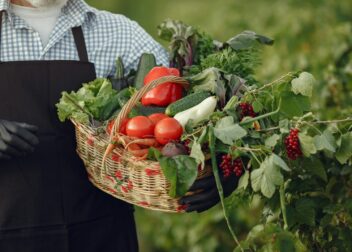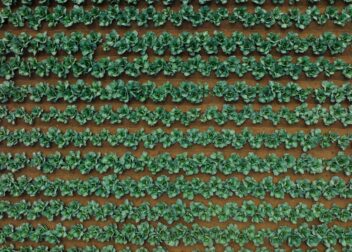Homesteading on a Budget: Starting Small and Growing Smart
Starting your homesteading journey doesn’t require a massive bank account or inherited farmland. With careful planning, creative thinking, and a willingness to start small, you can begin building your dream homestead even on a tight budget. Let’s explore practical strategies that have helped countless families transform their financial constraints into opportunities for sustainable living.
Understanding Budget-Friendly Homesteading
Budget homesteading isn’t about cutting corners on quality—it’s about making smart choices that maximize your resources while building toward long-term sustainability. The key lies in prioritizing essential investments, finding creative alternatives, and understanding that homesteading is a gradual process, not an overnight transformation.
Many successful homesteaders started with less than $5,000 and a patch of land smaller than an acre. What matters most is your commitment to learning, adapting, and growing your skills alongside your property.
Starting Small: Land and Location Strategies
Finding Affordable Land
Rural properties often offer the best value for aspiring homesteaders. Consider these approaches:
Look Beyond Perfect Properties: Land with older structures, minor drainage issues, or overgrown areas typically costs significantly less. Many of these “problems” can become advantages with some sweat equity and creativity.
Consider Owner Financing: Many rural landowners prefer seller financing over traditional bank sales. This arrangement often requires lower down payments and can eliminate bank fees, making land ownership more accessible.
Explore Land Contracts and Rent-to-Own: These arrangements allow you to start homesteading immediately while building equity over time. You’ll often find motivated sellers willing to negotiate flexible terms.
Mobile Home Parks with Land: Some mobile home communities offer small plots where you can keep chickens, maintain gardens, and practice homesteading skills while living affordably.
Making the Most of Small Spaces
You don’t need 40 acres to start homesteading effectively. A quarter-acre can support a family garden, small flock of chickens, and even a goat or two in many areas. Focus on intensive growing methods like square foot gardening, vertical growing systems, and companion planting to maximize production in minimal space.
Essential Infrastructure on a Shoestring
Water Systems That Won’t Break the Bank
Rainwater Harvesting: Start with simple rain barrels connected to your gutters. A basic system costs under $100 and can provide hundreds of gallons of free water monthly. As your budget allows, expand to larger cistern systems.
Well Alternatives: If drilling a well isn’t feasible, consider driven wells or hand-dug wells for shallow water tables. These DIY options can cost a fraction of professionally drilled wells.
Greywater Systems: Simple greywater systems redirect shower and washing machine water to irrigate gardens. Basic setups require minimal plumbing skills and cost less than $200 in materials.
Power Solutions for Less
Solar Power Basics: Start with small solar setups for specific needs like chicken coop lighting or water pumping. A basic solar kit for essential lighting costs around $300-500 and provides valuable experience before investing in larger systems.
Micro-Hydro Options: If you have flowing water on your property, small micro-hydro generators can provide consistent power for less than $1,000.
Wind Power: Small residential wind turbines work well in consistently windy areas and can supplement solar systems effectively.
Budget-Friendly Shelter Solutions
Tiny Houses and Cabins: Small structures cost significantly less to build and maintain than traditional homes. Many areas allow structures under 200 square feet without permits, reducing initial costs further.
Converted Outbuildings: Transform existing barns, sheds, or garages into living spaces. These conversions often cost 50-70% less than new construction while providing unique, rustic charm.
Mobile Homes and RVs: Used mobile homes and RVs offer immediate, affordable housing while you develop your property. Many homesteaders live in temporary housing for several years while building their permanent homes debt-free.
Growing Food Without Going Broke
Smart Garden Planning
Start with High-Value Crops: Focus on expensive grocery store items like herbs, salad greens, and specialty vegetables. A $2 pack of basil seeds can produce $100+ worth of fresh herbs throughout the growing season.
Succession Planting: Plant small amounts of fast-growing crops every 2-3 weeks instead of everything at once. This approach reduces waste, extends harvest periods, and requires less initial investment in seeds.
Save Seeds: Learning to save seeds from your best plants eliminates ongoing seed costs and develops varieties perfectly adapted to your specific growing conditions.
Low-Cost Growing Methods
Raised Beds from Recycled Materials: Build raised beds using reclaimed wood, cinder blocks, or even old tires. These materials often cost nothing and create productive growing spaces in poor soil conditions.
Composting Systems: Transform kitchen scraps and yard waste into valuable soil amendments. A simple three-bin composting system costs under $50 to build and eliminates the need to purchase expensive fertilizers.
Mulching Strategies: Use free materials like grass clippings, fallen leaves, and wood chips to suppress weeds and retain moisture. Many municipalities offer free mulch programs, and tree service companies often deliver wood chips at no cost.
Livestock on a Limited Budget
Choosing Cost-Effective Animals
Chickens First: Chickens offer the best return on investment for beginning homesteaders. A small flock costs $100-200 to start and provides eggs, meat, and pest control while requiring minimal space and care.
Rabbits for Protein: Rabbits reproduce quickly, require little space, and convert feed to meat more efficiently than most livestock. Initial setup costs run $200-300 for breeding stock and basic housing.
Goats for Dairy: In areas where goats are permitted, a pair of dairy goats can provide fresh milk, cheese, and meat while helping control brush and weeds. Start with younger animals to reduce initial costs.
DIY Animal Housing
Recycled Materials: Build coops and pens using pallets, old lumber, and salvaged hardware. Many successful homesteaders construct functional chicken coops for under $50 using entirely recycled materials.
Mobile Housing: Chicken tractors, moveable rabbit hutches, and portable goat shelters allow you to rotate animals across your property, improving soil health while using minimal permanent infrastructure.
Money-Saving Tips and Tricks
Community Resources and Networking
Skill Sharing: Connect with other homesteaders, gardeners, and DIY enthusiasts in your area. Trading skills, tools, and knowledge saves money while building valuable relationships.
Buy Clubs and Co-ops: Join or organize buying clubs for seeds, feed, and supplies. Group purchasing often reduces costs by 20-40% compared to individual retail purchases.
Equipment Sharing: Share expensive tools and equipment with neighbors. A group of five families can afford a quality tiller, chainsaw, or other equipment that would be prohibitively expensive individually.
Timing Your Purchases
End-of-Season Sales: Purchase seeds, plants, and garden supplies during end-of-season clearances. Many retailers mark down gardening supplies 50-75% in late summer and fall.
Off-Season Planning: Plan major purchases during slow seasons when contractors and suppliers offer better prices. Building materials, fencing, and livestock often cost less during winter months.
Bulk Buying: Purchase non-perishable supplies in bulk when prices are favorable. Animal feed, canning supplies, and building materials store well and save money when bought in larger quantities.
Building Gradually: The Phase Approach
Year One: Foundation Building
Focus on basic infrastructure, soil improvement, and learning fundamental skills. Establish water access, basic shelter, and your first small garden. Keep costs minimal while gaining experience and understanding your property’s unique characteristics.
Year Two: Expanding Production
Add livestock, expand garden spaces, and implement more sophisticated systems based on first-year experience. This staged approach prevents overwhelming yourself financially or practically.
Year Three and Beyond: Refinement and Growth
Continue expanding based on your family’s needs and interests. By this point, you’ll have developed skills, established systems, and gained confidence to tackle larger projects efficiently.
Common Budget Mistakes to Avoid
Over-Investing Initially
Many new homesteaders spend heavily on equipment and infrastructure before understanding their actual needs. Start small, learn your requirements, and invest gradually based on experience rather than enthusiasm.
Ignoring Local Regulations
Research zoning laws, building codes, and agricultural regulations before making major investments. Violations can result in expensive corrections or forced removal of improvements.
Focusing Only on Initial Costs
Consider ongoing costs when making decisions. The cheapest option upfront may prove expensive long-term if it requires frequent repairs, replacements, or inefficient operation.
Making Money from Your Homestead
Direct Sales Opportunities
Farmers Markets: Sell excess produce, eggs, or value-added products at local farmers markets. Many markets charge minimal fees and provide direct access to customers willing to pay premium prices for quality products.
CSA Programs: Community Supported Agriculture programs allow customers to purchase shares of your harvest in advance, providing operating capital early in the season.
Online Sales: Social media and online platforms make it easier than ever to reach customers directly. Many homesteaders successfully sell specialty products, seeds, or plants through online channels.
Value-Added Products
Transform raw products into higher-value items. Fresh eggs might sell for $3 per dozen, but those same eggs become $8 dozen when pickled or used in baked goods. Herbs, vegetables, and fruits can become profitable jellies, pickles, or dried products with minimal additional investment.
Agritourism and Education
Share your knowledge and experience through workshops, farm tours, or consulting services. Many people want to learn homesteading skills and will pay for hands-on instruction from experienced practitioners.
Your homesteading journey doesn’t have to wait for perfect financial conditions. By starting small, making smart choices, and building gradually, you can create a thriving homestead that provides food security, reduces living expenses, and offers the satisfaction of greater self-sufficiency. Remember that every expert homesteader started exactly where you are now—with a dream and the determination to make it reality.
Ready to start your budget-friendly homesteading adventure? Connect with the Farm Finder Network community to discover land opportunities, connect with experienced homesteaders, and access resources designed specifically for aspiring farmers and homesteaders. Your sustainable future starts with the first step you take today.



